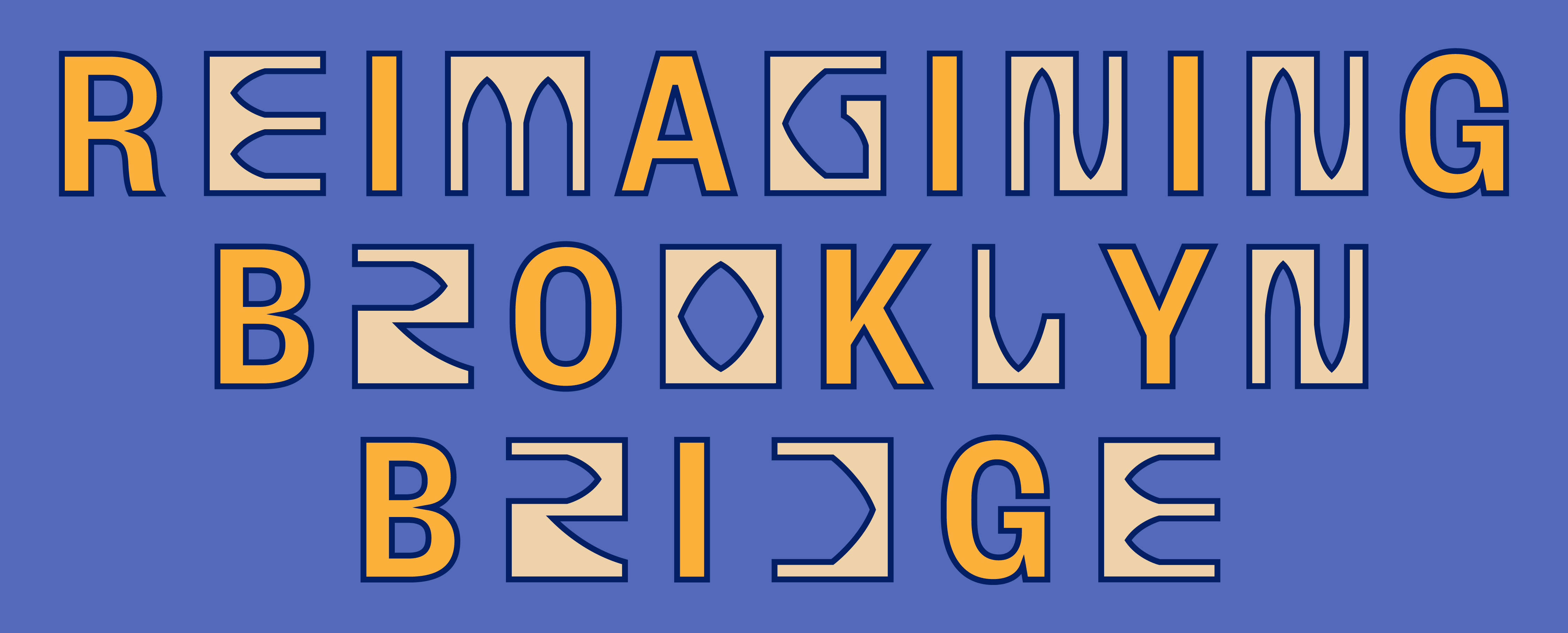Reimagining Brooklyn Bridge: Design Showdown
Thursday, July 23, 2020
12:00pm

Reimagining Brooklyn Bridge, our design competition presented in collaboration with the New York City Council, challenges participants to rethink the iconic Brooklyn Bridge walkway. As made even more clear by the pandemic, the design of our streets and shared spaces must be responsive to the present moment and work to correct past injustices. They must foster equitable, accessible, and sustainable transportation options, create a healthy and safe environment for all New Yorkers, and opportunities for small businesses and vendors to flourish.
Finalist Teams (Professional Category)
Back to the Future
BIG + ARUP, New York
Back to the Future seeks to return the bridge to its original state, both architecturally and functionally, and pilots innovations in autonomous mobility and public space design. By removing cars and related ramps, and providing more space for pedestrians, bikes and transit, this proposal moves more people and creates a stronger connection between Downtown Brooklyn, Lower Manhattan, and beyond.
Bridge X
ScenesLab + Minzi Long + Andrew Nash, New York, Boston, and Vienna
Bridge X proposes a Brooklyn Bridge that evolves in response to public feedback and adapts from a pandemic to a post-pandemic era. Through a phased approach, Bridge X reimagines the upper and lower decks to reclaim space for greater pedestrian and cyclist access, to make room for vendors and small businesses, and to offer new modes of engagement with the bridge. Digital tools and design interventions enable visitors to more easily access, explore, and reflect on their experiences of the bridge.
Brooklyn Bridge Forest
Pilot Projects Design Collective, Cities4Forests, Wildlife Conservation Society, Grimshaw and Silman; New York and Montreal
Brooklyn Bridge Forest reimagines the bridge as an icon of climate action and social equity, improving mobility while respecting the landmark structure. The historic wooden walkway is expanded using planks sustainably sourced from a “partner forest” community in Guatemala that protects a 200,000-acre rainforest. A dedicated bike path and reclaimed traffic lane create new space for cyclists and low-carbon transit, while biodiverse “microforests” at either end of the bridge bring nature to New York City and serve as green spaces for underserved communities.

